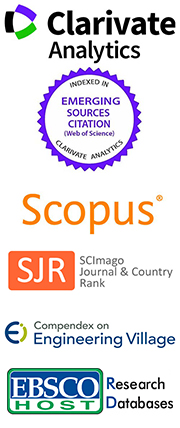Fuel Property Evaluation of Wood Pellets from Rice Straw and Refuse-Derived Fuel Blends
Abstract
Keywords
Full Text:
PDFReferences
Kolosok S., Bilan Y., Vasylieva T., Wojciechowski A., and Morawski M., 2021. A scoping review of renewable energy, sustainability and the environment. Energies 14(15): 4490.
Department of Alternative Energy Development and Efficiency (DEDE), 2015. Alternative Energy Development Plan 2015–2036 (AEDP2015). Ministry of Energy, Thailand.
Soponpongpipat N., Comsawang P., and Nanetoe S., 2019. Quality properties and pyrolysis characteristics of cassava rhizome pellets produced by alternating between pelletizing and torrefaction. Processes 7(12): 930.
Soponpongpipat N., Chonlaphan S., Comsawang P., and Jaruyanon P., 2022. Short torrefaction process: a new alternative way for biomass pellet upgrading. International Energy Journal 2 (1): 61–70.
Rezaei H., Yazdanpanah F., Lim C.J. and Sokhansanj S., 2020. Pelletization of refuse-derived fuel with varying compositions of plastic, paper, organic and wood. Sustainability 12(11): 4645.
Chalermcharoenrat S., Laohalidanond K. and Kerdsuwan S., 2015. Optimization of combustion behavior and producer gas quality from reclaimed landfill through highly densify RDF-gasification. Energy Procedia 79: 321–326.
Issac K. and S.O. Bada. 2020. The co-combustion performance and reaction kinetics of refuse derived fuels and South African high-ash coal. Heliyon 6(1): e03309.
Sever Akdağ A., Atımtay A., and Sanin F.D., 2016. Comparison of fuel value and combustion characteristics of two different RDF samples. Waste Management 47: 217–224.
Chotikhun A., Laosena P., and Kerdsuwan S., 2023. Elemental compositions of wood plastic pellets made from sawdust and refuse-derived fuel (RDF) waste. Applied Sciences 13(20): 11162.
Laosena R., Theppaya S., Kerdsuwan P., and Kerdsuwan S., 2022. Characterization of mixed pellets made from rubberwood (Hevea brasiliensis) and refuse-derived fuel (RDF) waste as pellet fuel. Materials 15(9): 3093.
Yang Y., Liew R.K., Tamothran A.M., Foong S.Y., Yek P.N.Y., Chia P.W., Tran T.V., Peng W., and Lam S.S., 2021. Gasification of refuse-derived fuel from municipal solid waste for energy production: A review. Environmental Chemistry Letters 19: 2127–2140.
Soponpongpipat N., Sittikul D., and Comsawang P., 2016. Prediction model of higher heating value of torrefied biomass based on the kinetics of biomass decomposition. Journal of Energy Institute 89: 425–435.
ASTM International, 2013. ASTM E873-82 (Reapproved 2013), Standard test method for bulk density of densified particulate biomass fuels. West Conshohocken, PA: ASTM International.
Pellet Fuels Institute (PFI), 2022. Standard Specifications for Residential/Commercial Densified Fuel. Available at: https://www.pelletheat.org/assets/docs/2022/2022_PFI_Standard_Specification.pdf
García R., González-Vázquez M.P., Rubiera F., Pevida C. and Gil M.V., 2021. Co-pelletization of pine sawdust and refused derived fuel (RDF) to high-quality waste-derived pellets. Journal Cleaner Production 328: 129635.
Nyashina G.S., Dorokhov V.V., Shvedov D.K., and Strizhak P.A., 2025. Wood pellets with waste: energy, environmental and mechanical aspects. Renewable Energy 250: 123269.
DOI: https://doi.org/10.64289/iej.25.03A11.3464658


